She was born the day women got the vote. And then a century passed...
Gladys Ament has seen women go from skirts to pants, from housewives to members of the workforce - and now, from first ladies to presidential nominees
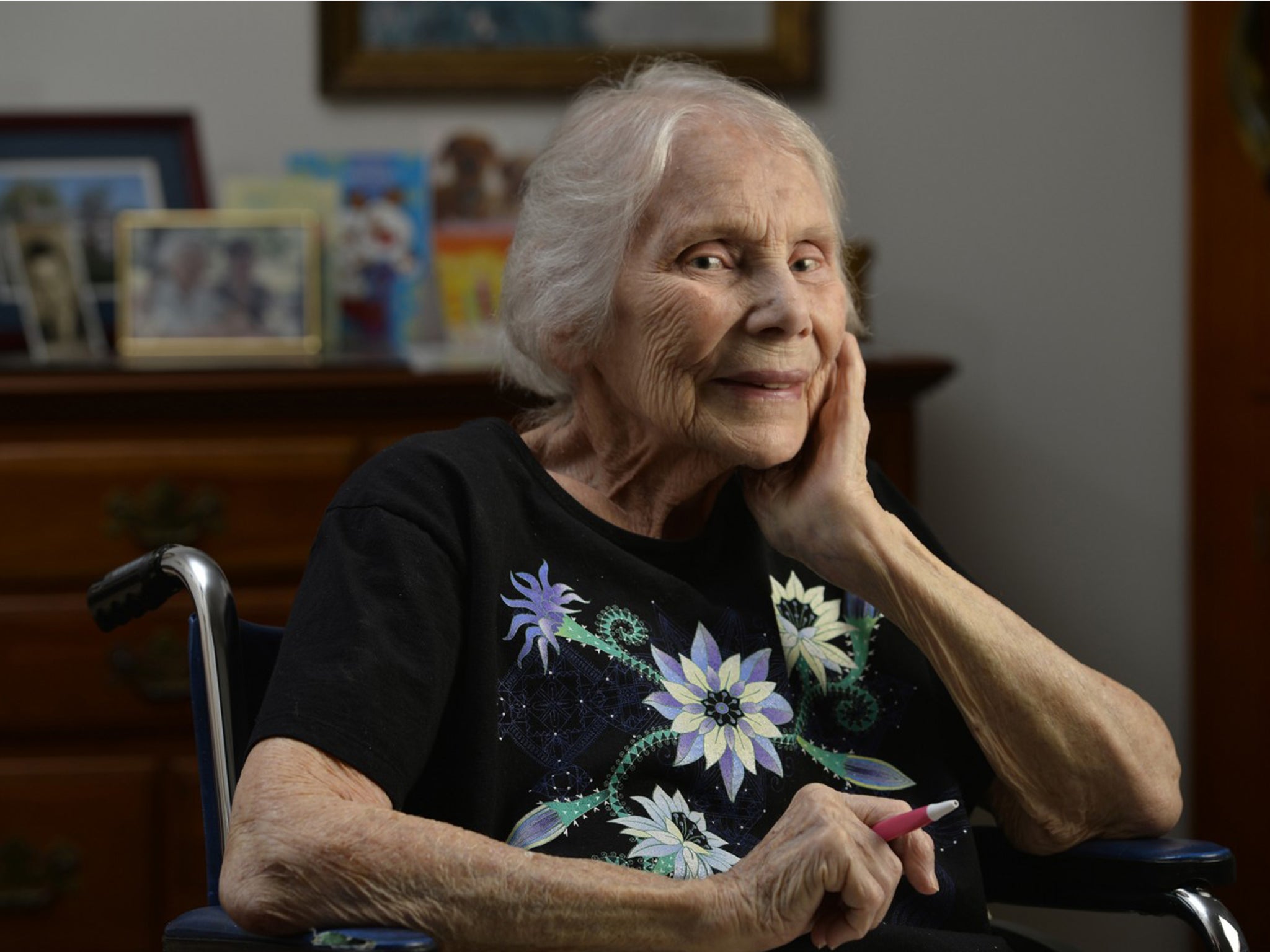
Your support helps us to tell the story
From reproductive rights to climate change to Big Tech, The Independent is on the ground when the story is developing. Whether it's investigating the financials of Elon Musk's pro-Trump PAC or producing our latest documentary, 'The A Word', which shines a light on the American women fighting for reproductive rights, we know how important it is to parse out the facts from the messaging.
At such a critical moment in US history, we need reporters on the ground. Your donation allows us to keep sending journalists to speak to both sides of the story.
The Independent is trusted by Americans across the entire political spectrum. And unlike many other quality news outlets, we choose not to lock Americans out of our reporting and analysis with paywalls. We believe quality journalism should be available to everyone, paid for by those who can afford it.
Your support makes all the difference.She was born at the family home in Lonaconing, a mining town in the mountains of Western Maryland, and delivered by the midwife who delivered all the Lonaconing babies around that time, which was August 261920. Her mother named her Gladys Elaine Beeman. Her father was on his way to Detroit, where he hoped he could find work in a car factory. Her president was Woodrow Wilson, whose secretary of state was Bainbridge Colby, a somber-looking man with little political experience whose appointment the newspapers had described as bizarre.
On that day, Colby sat at his home in Washington, D.C., and waited for a train to arrive from Tennessee. It carried some papers, and when they came, he signed them. Tennessee had just become the 36th state to ratify the 19th Amendment; now that the ratification nationwide had reached the required majority, Colby’s signature would make it the law of the land. That night, Gladys’s relatives came to Lonaconing to meet the baby girl whose country had just granted women the right to vote.
Gladys grew up, and Gladys grew old, and over 96 years it was the story of America and the women who lived there: hemlines rising and falling, ideas coming and going - and things that were done certain ways, and then all of a sudden done in different ways, which made some people feel liberated and some of them feel uncomfortable. In one of the first elections after the amendment was ratified, Gladys’s grandfather put on the swallowtailed coat and top hat he wore for special occasions and walked down to the polling station to cast his ballot, for the Democrat. Later that day, her grandmother put on her own Sunday best, voted Republican, and returned to triumphantly tell her husband, “I boxed you out.”
Lonaconing was in moonshine country and two-room schoolhouse country, with a population of 2,054. Gladys’s teacher was called Miss B, and Gladys wanted to be like her, which was a reasonable dream: A woman could have a career, as long as she never married, and as long as the career was one of three things: a nurse, a secretary, a teacher. That made sense to Gladys, the way it made sense that the girls did the dishes and the boys brought in the coal, the way she accepted that she’d never study at a university even though teachers had told her she had the brains for it. It was the way things were.
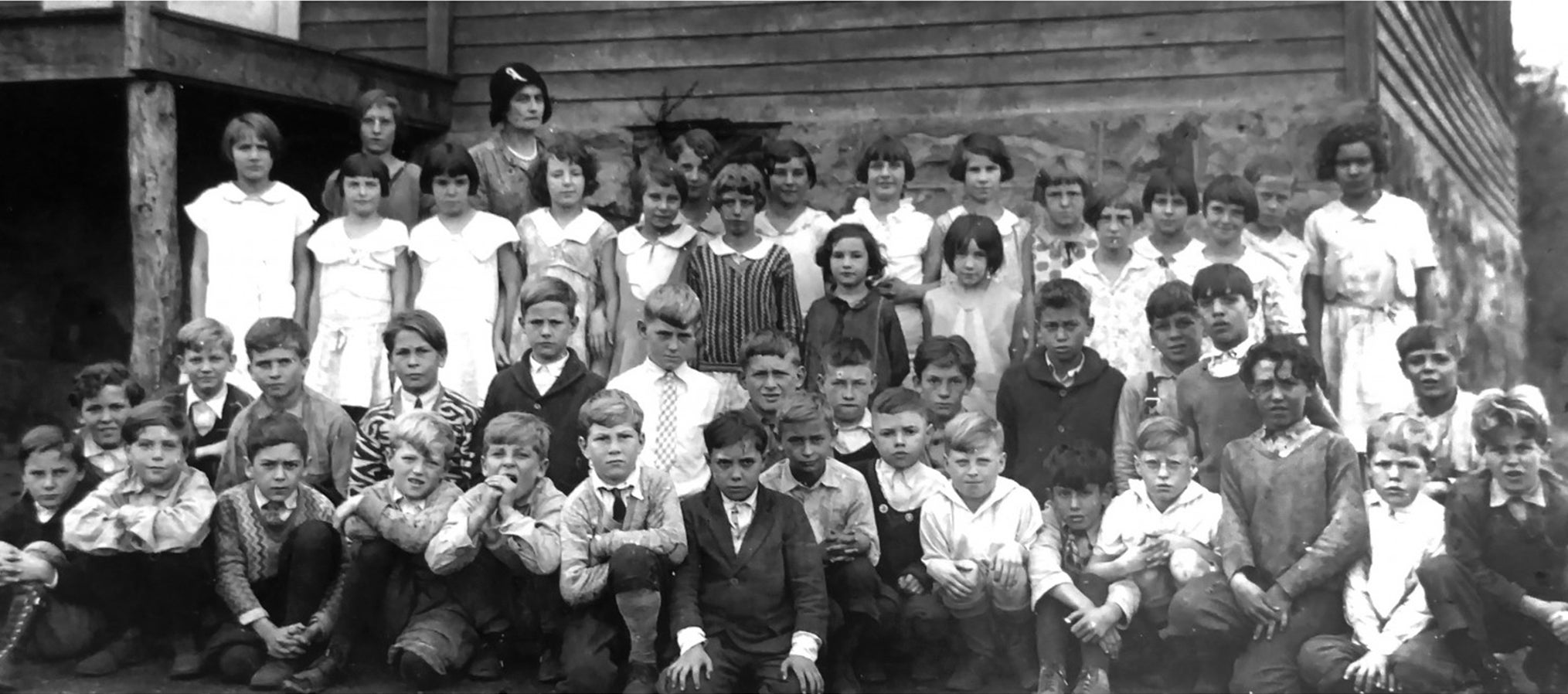
The Depression came, and there was no money in Lonaconing. She knew two girls who were going to Baltimore to try to make it there. Gladys was 20, it was 1940, and she took the fourth seat in a car driven by one of the girl’s older brothers to arrive at a boardinghouse in a neighborhood called Pigtown.
One night a friend arranged a double-date where it wasn’t clear who was supposed to match up with whom. “If you go on a date, you must make sure it’s two couples,” her mother had always told her, because that was what nice girls did. When the car pulled up, she got in the front seat to claim the boy who owned his own transportation. His name was Robert Ament. He was smart and reliable and a good pinochle player, so they eloped, and her relatives never stopped calling him “that man of Gladys’s,” because he wasn’t from the mountains and so could never truly fit in.
The war came, and there were no men in Baltimore. Bob’s job installing vital telephone lines kept him home for a while, but at the end of 1943 he was drafted, too, and he sent her letters from Europe: “To my one and only,” with hand-drawn cartoons of Cupid.
And then the world at home seemed to open up a little. Gladys saw posters of Rosie the Riveter, that strong-looking woman in a kerchief. There were posters of women holding drill bits: “Do the job he left behind,” they said, so she called up the telephone company where Bob had worked and tried to get a job there.
“Your husband is serving our country,” the boss told her sternly. “And we are going to hold that job for him, and any men who want jobs when they come home.”
That made sense to Gladys, she supposed, because everyone hoped the war was almost over and everyone wanted the soldiers to return. She kept a job at a Montgomery Ward instead, filling catalogue orders, searching for shoes that had been ordered by people tracing their feet on paper. The workers were mostly women, and the bosses were all men. Sometimes if she was assigned a task, she was told to ask a man for help, even if she already knew how to do it. Even if she’d been there longer.
She bought her first pair of pants, and sent Bob a picture of herself in them, strolling on a beach. He wrote her back and said, “You mean you go outside with those pants on?” She sent him a picture of herself in a bathing suit, and he wrote back, “You’re wearing too little!”
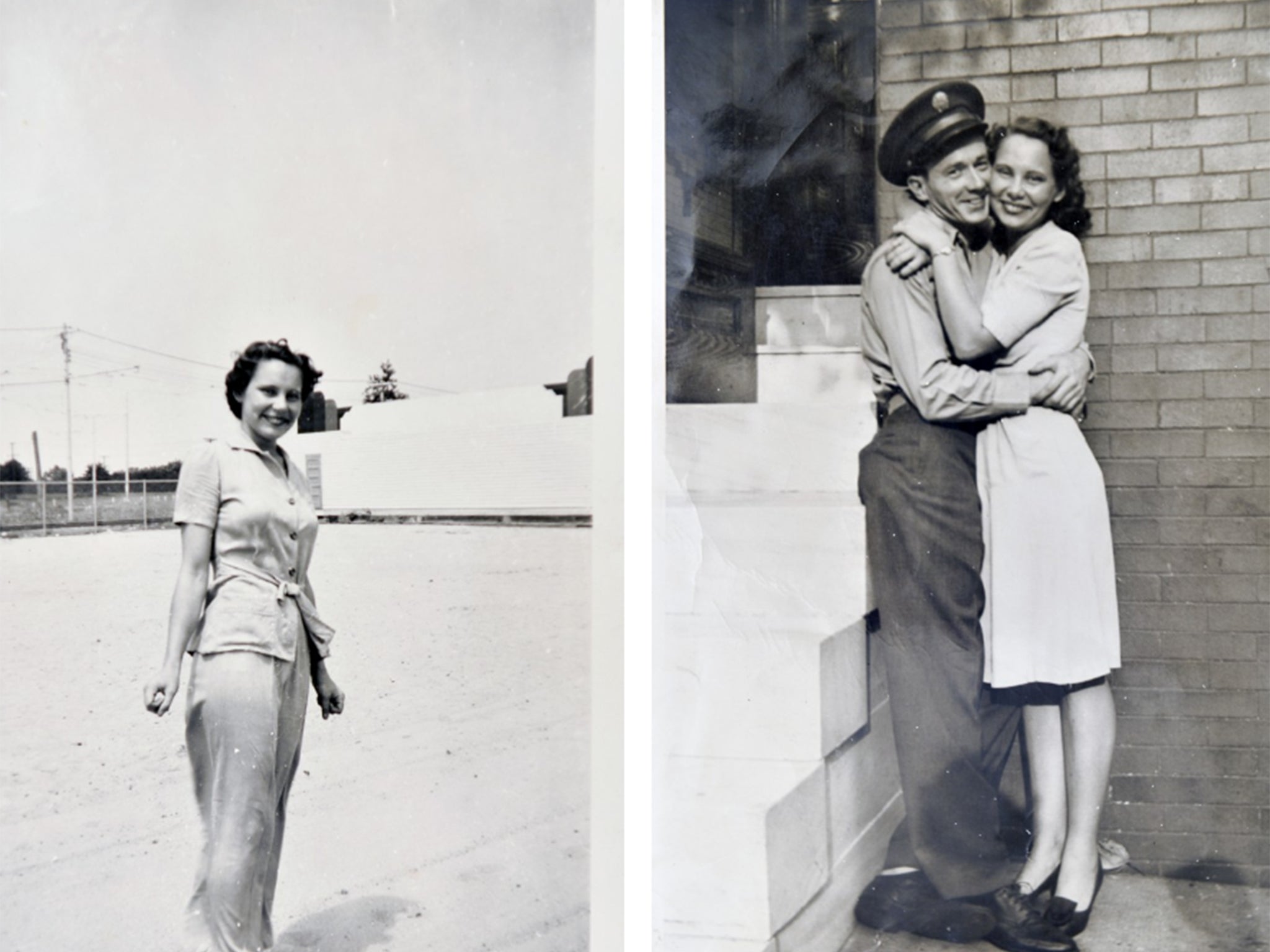
The president was Franklin Delano Roosevelt. The first lady was traveling all over the country for him, making speeches, meeting with unions, visiting factories and malaria patients. She visited the mountain country where Gladys had grown up. She wrote a newspaper column called “My Day,” where she talked about who she had seen and what she had learned.
“It is said that gossip is the vice of women,” she wrote in September 1944. “Yet I have lived nearly sixty years, during which I have spent a good part of my time with men, and I have not found that they are any less quick to repeat things about which they know little and which they have not verified.”
Two months later, in November 1944, the first election in which Gladys was old enough to cast a ballot, she went to her Baltimore polling place and voted for FDR. If she were being honest with herself, she was really voting for Eleanor.
She voted for Harry Truman, who ended the war. He was her favorite president, because of his plain way of speaking and the fact that he sometimes cussed.
She voted for Dwight D. Eisenhower twice.
She voted for Richard Nixon over John F. Kennedy, but then regretted it later, because Kennedy seemed so smart and died so young.
By then, Bob had come home and they had a daughter, Mary, and a son, Robert Jr. They built a house out in Baltimore County, and had a third child, Marshall. Gladys’s job was to stay home and raise them, which she did, while trying to navigate a world that kept changing. When she heard her daughter’s grade school would be integrating black students, she worried about the best way to explain to Mary what was happening and why some people might be mad about it.
“You be nice to everybody,” she ended up saying, simply, because her daughter was barely 10. “You be nice to everybody.”
It was the 1960s. Betty Friedan published The Feminine Mystique, and wrote, “Each suburban wife struggles with it alone. As she made the beds, shopped for groceries, matched slipcover material, ate peanut butter sandwiches with her children, chauffeured Cub Scouts and Brownies, lay beside her husband at night - she was afraid to ask even of herself the silent question - ‘Is this all?’ ”
Gladys didn’t have much time to notice the feminist revolution. She was a wife, and a mother, and she loved those roles. But the kids got older, and she did start to want things. She wanted to go to work. Other women were; other women had kept their jobs after the war and built careers.
Bob didn’t tell her not to, but she could tell he didn’t like the idea, just like she could tell he didn’t like the idea of her going back to school for a college degree. The kids were young. It would disrupt the family rhythms too much. She got a job anyway, but she made sure it was a part-time one - a teacher’s aide at a school for special-needs children - so that she could still get home in time to make dinner, still be around on weekends for family car trips. Nurse, secretary, teacher.
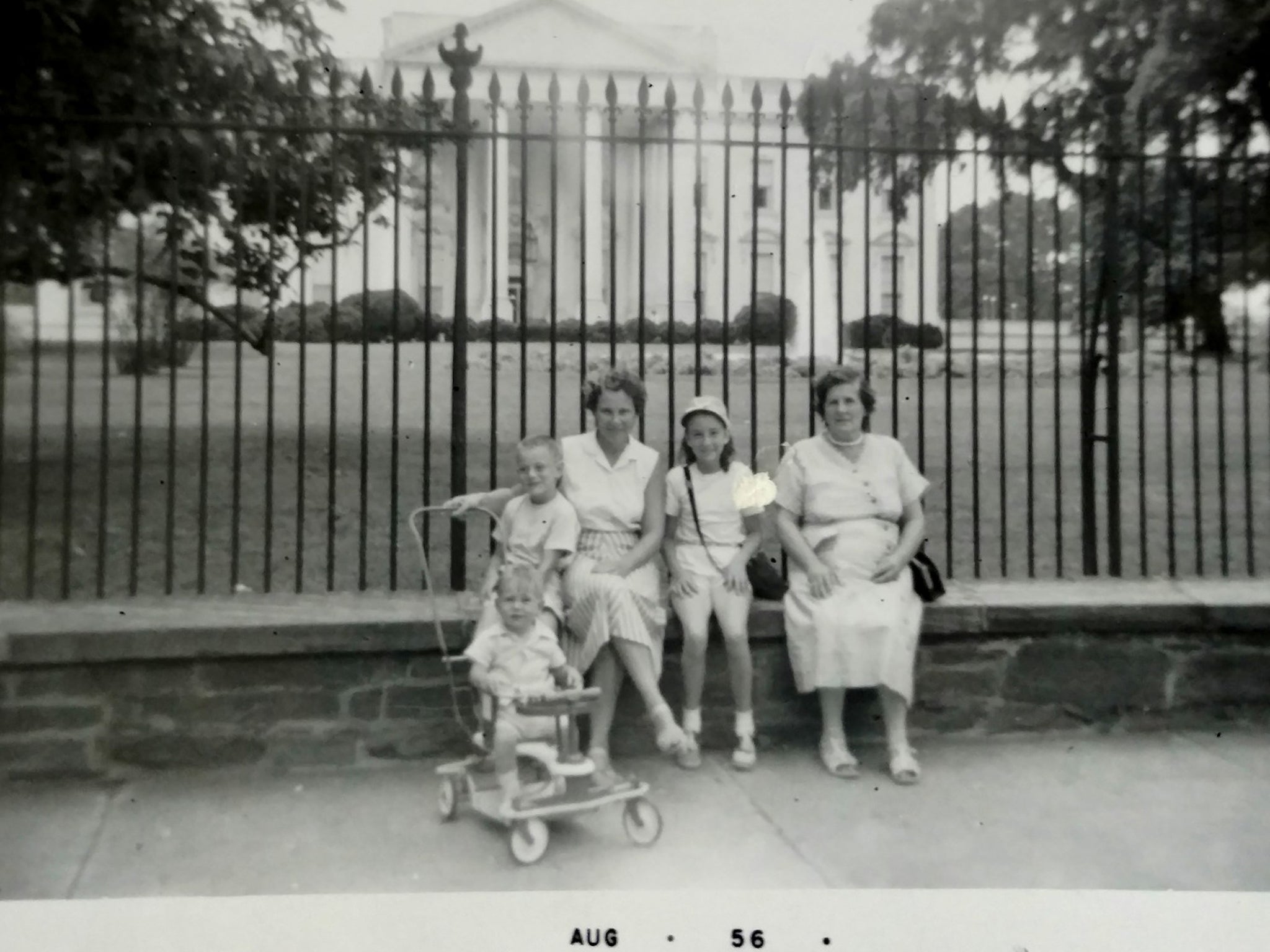
When she and Bob disagreed on something, usually they talked things through, but in the end he was the head of the household and was responsible for the decisions. Her daughter, Mary, later wondered how her mom felt about that. She wondered whether Gladys disagreed with his decisions about curfews, about clothing, about who could drive the car where and when.
But often this way made sense to Gladys, and she was glad for him to be the leader of the family. Sometimes it didn’t make sense to her, though. But it was still the way it was. When they fought, she would throw her dishrag on the counter and storm outside to walk laps around the yard until she cooled off. “There she goes again,” the neighbours would say.
The Equal Rights Amendment. Title IX. Eleven women in the U.S. House of Representatives, then 15, then 19. No women in the Senate.
She voted for Lyndon Baines Johnson
She voted for Hubert Humphrey.
She voted for George McGovern, and then Carter, twice, even though she hadn’t thought he was that great the first time around.
She voted in every election, national and local. On election days, Bob would come home from work and say, “Well, who am I voting for today, Gladys?” because he knew that she had researched and thought about political things more than he had.
Later, much later, she would hear about some female engineers who had worked with Bob at the telephone company back in the days when he hadn’t wanted his own wife to get a job. She learned that he had always been supportive of them and always treated them with respect in the workplace. People were complicated; they could hold many different beliefs at once.
When the kids got near college age, money was tight, but Bob said he thought they could save enough money for their two sons to go on to a university. Gladys asked, “What about Mary?”
“I can spend it on my sons,” he said, but he told Gladys he wasn’t sure it made sense to spend it on his daughter.
Gladys said, “If the boys get to go, then Mary gets to go, too.”
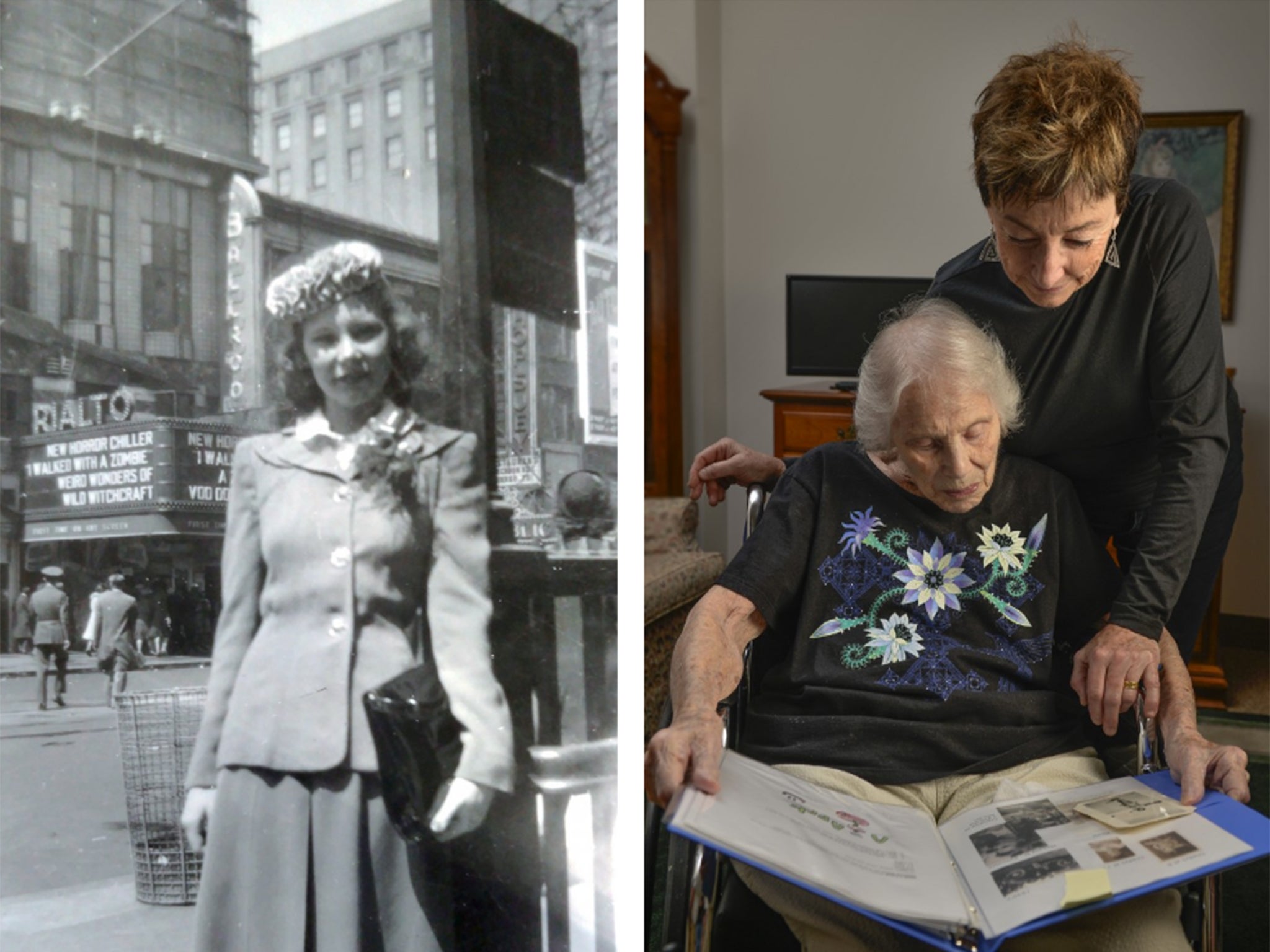
She voted for Walter Mondale.
She voted for George H.W. Bush.
Bill Clinton ran for office and she liked him. She couldn’t help it, with his folksy drawl. His wife reminded her of Eleanor Roosevelt, the last time that she could remember a first lady being so involved in White House life.
When Clinton’s philandering past came out, she wondered whether that should be such a big deal. She had lived through philandering presidents before. She had lived through a time when a man’s cheating was something to be tolerated and expected. The same grandfather who had once put on his swallowtailed coat to go and vote also put on his swallowtailed coat for other reasons. “Going up to see Mrs. Jones, are you?” her grandmother would ask, sharply, and it was only later that Gladys realised what it meant.
She voted for Bill again, and by then she was one of many because women were voting at higher rates than men.
Her daughter Mary’s life was different than hers. She did go to college. She studied education because the tuition was cheaper than her dream major of architecture. She became a teacher. But then she went on to become an administrator, the boss, with men and women alike working for her.
Bob retired. Gladys thought about continuing to work, because she’d discovered how much she loved it. She loved the self-worth that came with it, and she was naturally patient with the children. Eventually, though, he persuaded her to retire too, and she was glad he had, because they spent happy years traveling through the United States and Europe before her husband of more than 50 years died at the age of 76.
Gladys voted for Al Gore.
Her son had a daughter, which meant that Gladys had a granddaughter and she could see yet another generation of young women growing up, with even more opportunities than she’d ever imagined for herself. Her granddaughter never questioned whether she would be allowed to go to college. She just went, and while in school she worked part time in a job that nobody told her would be reserved for men.
Gladys voted for John F. Kerry.
She voted for Barack Obama, in 2008 and in 2012.
She sold the house they’d built in Baltimore County and moved to a retirement community in Southern Maryland. Her health started to waver; she moved to the retirement home’s assisted-living wing, where she maneuvered around her small apartment by making sure to grasp on to railings or the backs of chairs.
She followed politics, as she always had. She watched as the 2016 election came, and as the former first lady, the one who had reminded her of Eleanor Roosevelt, was blamed for her husband’s infidelity. She watched as the woman’s fitness for office was questioned. She thought about the 18 presidential elections she had voted in, over the course of 70 years, and the 17 men she had watched take the office in her lifetime. Some of them had been good leaders, and some less so. She knew what made sense to her now.
In the middle of October, Mary drove to Gladys’s retirement home with the absentee ballot that her mother had requested weeks before, unsure of whether she’d be well enough to get to a polling center. Gladys had recently celebrated her 96th birthday, which was also the birthday of the amendment that now allowed her to do what she had always wondered if she would live long enough to do. She filled in an oval bubble with a pencil, and she voted for Hillary Clinton.
The Washington Post
Join our commenting forum
Join thought-provoking conversations, follow other Independent readers and see their replies
Comments